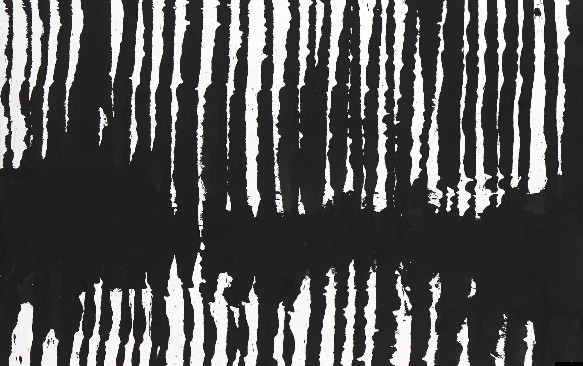TITLE_NAME :
09/17/2025 - 01/11/2026
Musée du Luxembourg
19 rue de Vaugirard
75006 Paris
museeduluxembourg.fr/en/node/7607
Rarely the focus of standalone exhibitions, Pierre Soulages’ works on paper form a vital part of his artistic journey. As early as 1946, he began exploring this medium using walnut stain, applying bold, sweeping marks that immediately set his work apart within the abstract movements of the time.
Thanks to exceptional loans from the Musée Soulages, the exhibition brings together 130 works produced between the 1940s and the early 2000s, including 25 never shown before.You'll discover a group of paintings on paper, long kept in the artist's studio, which testify to the constancy and freedom with which Soulages approached this medium.
After favouring walnut stain in the early years, Pierre Soulages often returned to the material used by cabinet-makers, whose qualities of transparency and opacity, and luminosity in contrast with the white of the paper, he loved. He would also use ink and gouache for works whose generally small formats yielded nothing to their formal power and diversity.
By highlighting this group of paintings on paper, the exhibition invites you to rediscover Pierre Soulages in a practice that is both intimate and decisive, at the heart of his plastic language.
Musée du Luxembourg
19 rue de Vaugirard
75006 Paris
museeduluxembourg.fr/en/node/7607
Rarely the focus of standalone exhibitions, Pierre Soulages’ works on paper form a vital part of his artistic journey. As early as 1946, he began exploring this medium using walnut stain, applying bold, sweeping marks that immediately set his work apart within the abstract movements of the time.
Thanks to exceptional loans from the Musée Soulages, the exhibition brings together 130 works produced between the 1940s and the early 2000s, including 25 never shown before.You'll discover a group of paintings on paper, long kept in the artist's studio, which testify to the constancy and freedom with which Soulages approached this medium.
After favouring walnut stain in the early years, Pierre Soulages often returned to the material used by cabinet-makers, whose qualities of transparency and opacity, and luminosity in contrast with the white of the paper, he loved. He would also use ink and gouache for works whose generally small formats yielded nothing to their formal power and diversity.
By highlighting this group of paintings on paper, the exhibition invites you to rediscover Pierre Soulages in a practice that is both intimate and decisive, at the heart of his plastic language.


